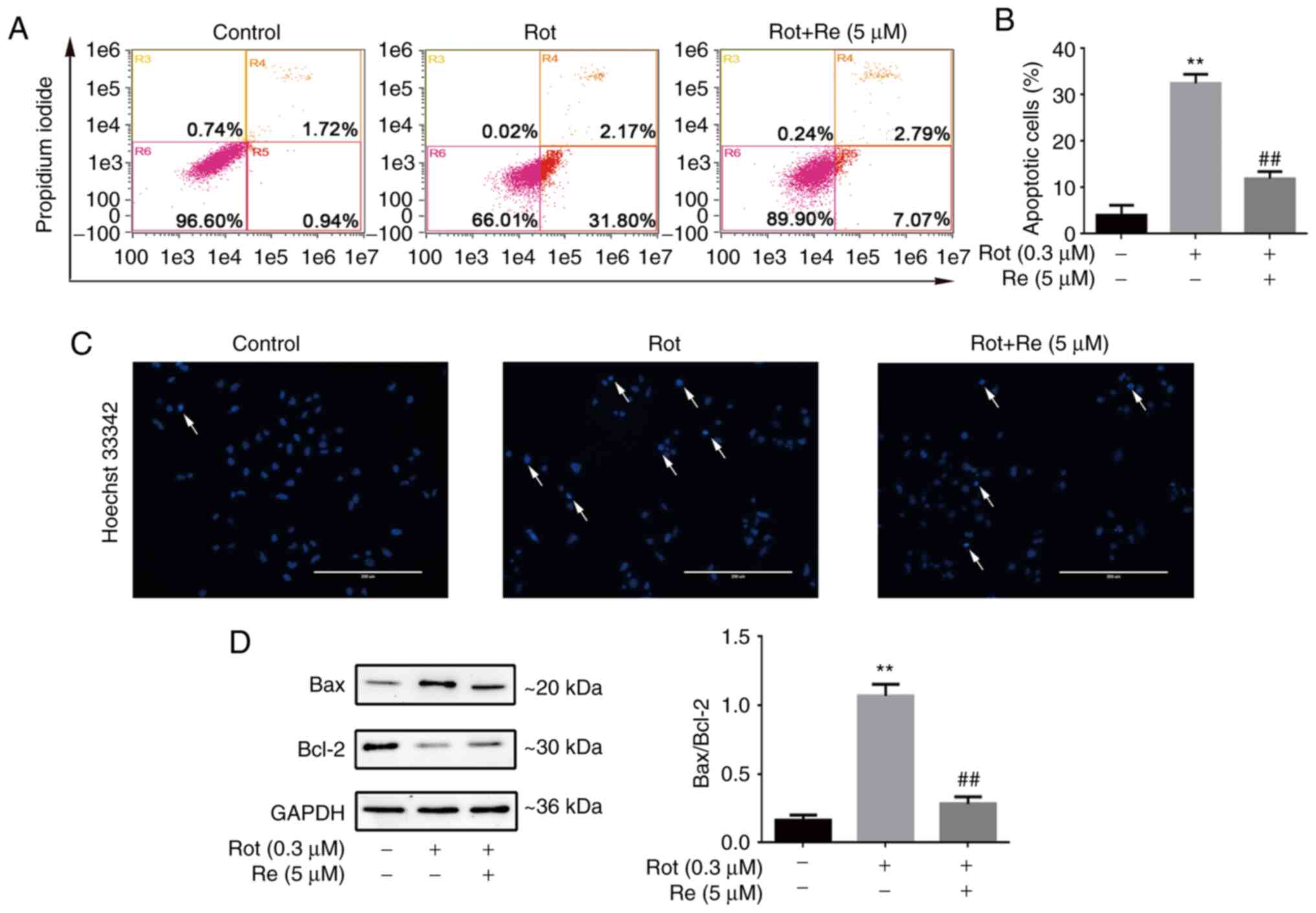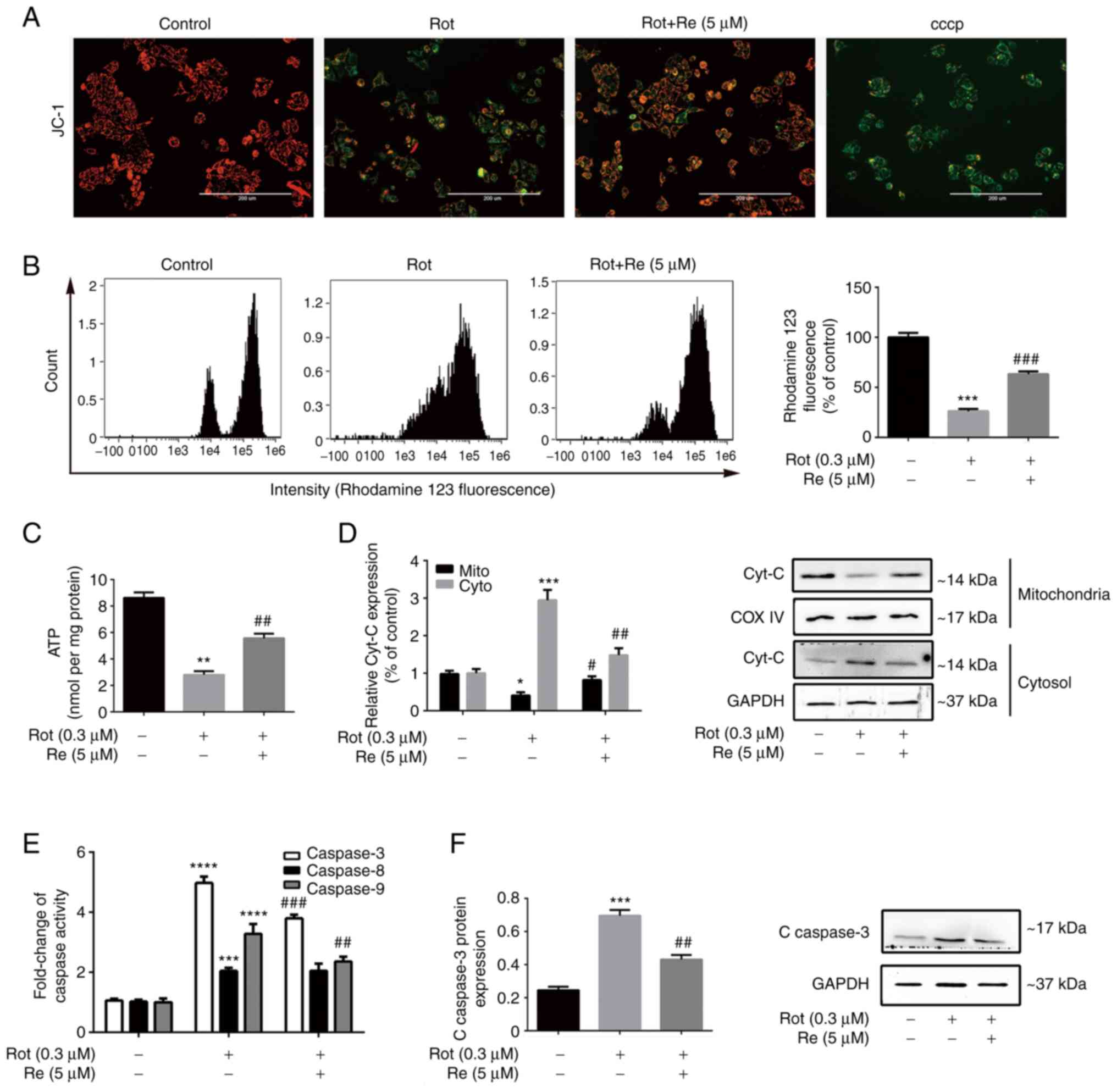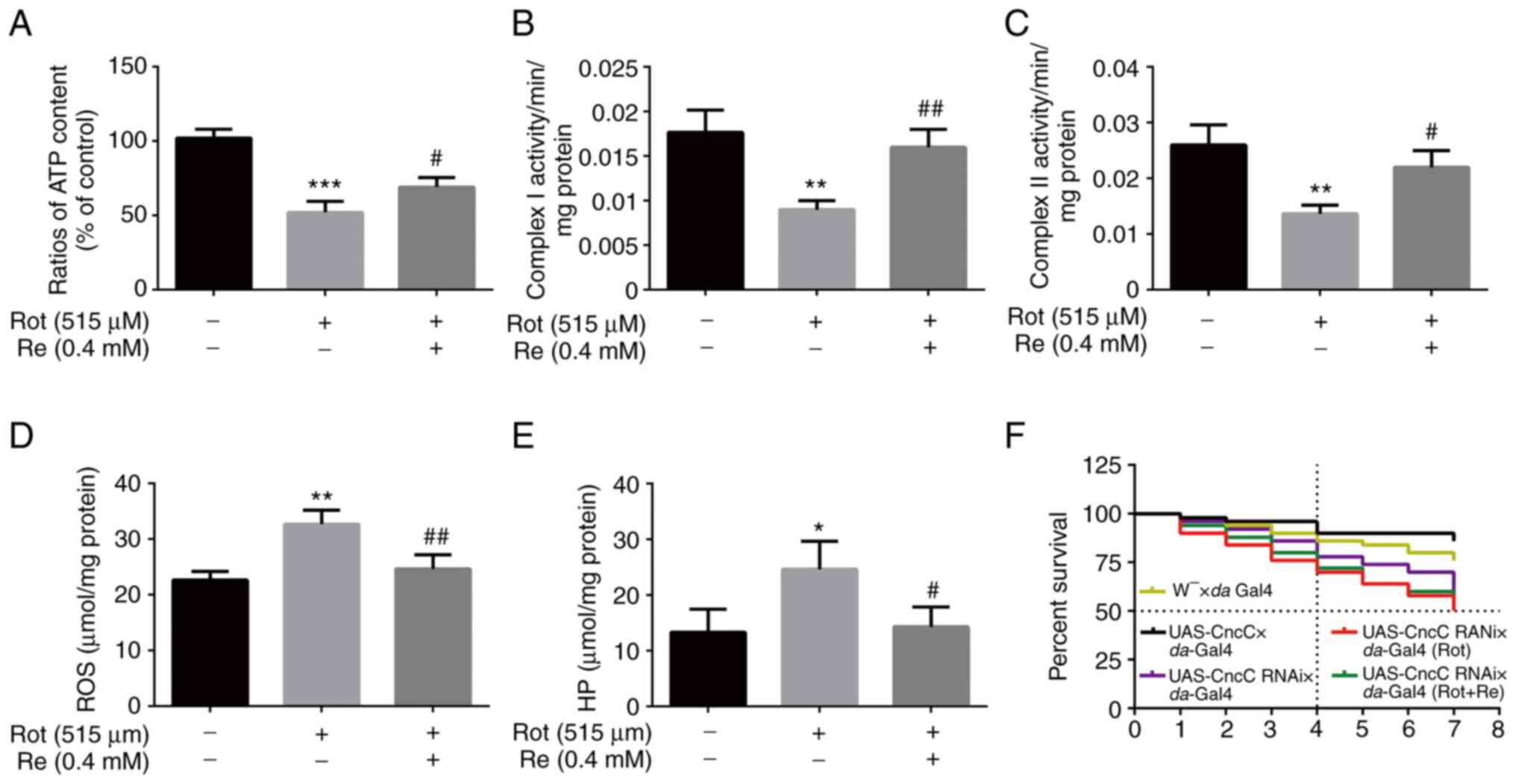|
1
|
Zhang Y, Ren R, Sanford LD, Yang L, Zhou
J, Tan L, Li T, Zhang J, Wing YK, Shi J, et al: Sleep in
Parkinson's disease: A systematic review and meta-analysis of
polysomnographic findings. Sleep Med Rev. 51:1012812020. View Article : Google Scholar : PubMed/NCBI
|
|
2
|
Ou Z, Pan J, Tang S, Duan D, Yu D, Nong H
and Wang Z: Global trends in the incidence, prevalence, and years
lived with disability of parkinson's disease in 204
countries/territories from 1990 to 2019. Front Public Health.
9:7768472021. View Article : Google Scholar : PubMed/NCBI
|
|
3
|
Choong CJ and Mochizuki H: Neuropathology
of α-synuclein in Parkinson's disease. Neuropathology. 42:93–103.
2022. View Article : Google Scholar : PubMed/NCBI
|
|
4
|
Kurihara K, Mishima T, Fujioka S and
Tsuboi Y: Efficacy and safety evaluation of safinamide as an add-on
treatment to levodopa for parkinson's disease. Expert Opin Drug
Saf. 21:137–147. 2022. View Article : Google Scholar : PubMed/NCBI
|
|
5
|
Uzuegbunam BC, Librizzi D and Hooshyar
Yousefi B: PET radiopharmaceuticals for alzheimer's disease and
parkinson's disease diagnosis, the current and future landscape.
Molecules. 25:9772020. View Article : Google Scholar
|
|
6
|
Tabassum R and Jeong NY: Potential for
therapeutic use of hydrogen sulfide in oxidative stress-induced
neurodegenerative diseases. Int J Med Sci. 16:1386–1396. 2019.
View Article : Google Scholar
|
|
7
|
Wilkaniec A, Cieślik M, Murawska E, Babiec
L, Gąssowska-Dobrowolska M, Pałasz E, Jęśko H and Adamczyk A: P2X7
receptor is involved in mitochondrial dysfunction induced by
extracellular alpha synuclein in neuroblastoma SH-SY5Y cells. Int J
Mol Sci. 21:39592020. View Article : Google Scholar
|
|
8
|
Feng ST, Wang ZZ, Yuan YH, Sun HM, Chen NH
and Zhang Y: Update on the association between alpha-synuclein and
tau with mitochondrial dysfunction: Implications for parkinson's
disease. Eur J Neurosci. 53:2946–2959. 2021. View Article : Google Scholar
|
|
9
|
Lin KJ, Lin KL, Chen SD, Liou CW, Chuang
YC, Lin HY and Lin TK: The overcrowded crossroads: Mitochondria,
Alpha-Synuclein, and the Endo-Lysosomal system interaction in
parkinson's disease. Int J Mol Sci. 20:53122019. View Article : Google Scholar
|
|
10
|
Minato T, Nakamura N, Saiki T, Miyabe M,
Ito M, Matsubara T and Naruse K: β-Aminoisobutyric acid, L-BAIBA,
protects PC12 cells from hydrogen peroxide-induced oxidative stress
and apoptosis via activation of the AMPK and PI3K/Akt pathway. IBRO
Neurosci Rep. 12:65–72. 2021. View Article : Google Scholar : PubMed/NCBI
|
|
11
|
Li C, Tang B, Feng Y, Tang F, Pui-Man Hoi
M, Su Z and Ming-Yuen Lee S: Pinostrobin exerts neuroprotective
actions in neurotoxin-induced parkinson's disease models through
Nrf2 induction. J Agric Food Chem. 66:8307–8318. 2018. View Article : Google Scholar : PubMed/NCBI
|
|
12
|
Brasil F, de Almeida F, Luckachaki M,
Dall'Oglio E and de Oliveira M: The C-glucosyl flavone isoorientin
pretreatment attenuates the methylglyoxal-induced mitochondrial
dysfunction in the human neuroblastoma SH-SY5Y cells: Role for the
AMPK-PI3K/Akt/Nrf2/γ-GCL/GSH axis. Metab Brain Dis. Mar
22–2022.(Epub ahead of print). View Article : Google Scholar
|
|
13
|
Chiang NN, Lin TH, Teng YS, Sun YC, Chang
KH, Lin CY, Hsieh-Li HM, Su MT, Chen CM and Lee-Chen GJ: Flavones
7,8-DHF, quercetin, and apigenin against tau toxicity via
activation of TRKB signaling in ΔK280 TauRD-DsRed SH-SY5Y Cells.
Front Aging Neurosci. 13:7588952021. View Article : Google Scholar
|
|
14
|
Wang Y, Yang G, Gong J, Lu F, Diao Q, Sun
J, Zhang K, Tian J and Liu J: Ginseng for Alzheimer's Disease: A
systematic review and meta-analysis of randomized controlled
trials. Curr Top Med Chem. 16:529–536. 2016. View Article : Google Scholar : PubMed/NCBI
|
|
15
|
Zhang X, Wang Y, Ma C, Yan Y, Yang Y, Wang
X and Rausch WD: Ginsenoside Rd and ginsenoside Re offer
neuroprotection in a novel model of parkinson's disease. Am J
Neurodegener Dis. 5:52–61. 2016.PubMed/NCBI
|
|
16
|
Rai SN and Singh P: Advancement in the
modelling and therapeutics of parkinson's disease. J Chem
Neuroanat. 104:1017522020. View Article : Google Scholar
|
|
17
|
Liu M, Bai X, Yu S, Zhao W, Qiao J, Liu Y,
Zhao D, Wang J and Wang S: Ginsenoside Re inhibits ROS/ASK-1
dependent mitochondrial apoptosis pathway and activation of
Nrf2-antioxidant response in beta-Amyloid-challenged SH-SY5Y cells.
Molecules. 24:26872019. View Article : Google Scholar
|
|
18
|
Livak KJ and Schmittgen TD: Analysis of
relative gene expression data using real-time quantitative PCR and
the 2(−Delta Delta C(T)) method. Methods. 25:402–408. 2001.
View Article : Google Scholar : PubMed/NCBI
|
|
19
|
Liu M, Yu S, Wang J, Qiao J, Liu Y, Wang S
and Zhao Y: Ginseng protein protects against mitochondrial
dysfunction and neurodegeneration by inducing mitochondrial
unfolded protein response in Drosophila melanogaster PINK1 model of
parkinson's disease. J Ethnopharmacol. 247:1122132020. View Article : Google Scholar
|
|
20
|
Ahmad S, Hussain A, Ullah F, Jamil M, Ali
A, Ali S and Luo Y: 60Co-γ radiation alters developmental stages of
zeugodacus cucurbitae (Diptera: Tephritidae) through apoptosis
pathways gene expression. J Insect Sci. 21:162021. View Article : Google Scholar
|
|
21
|
Ramalingam M, Huh Y and Lee Y: The
impairments of α-Synuclein and mechanistic target of rapamycin in
rotenone-induced SH-SY5Y cells and mice model of parkinson's
disease. Front Neurosci. 13:10282019. View Article : Google Scholar
|
|
22
|
Ren TT, Yang JY, Wang J, Fan SR, Lan R and
Qin XY: Gisenoside Rg1 attenuates cadmium-induced neurotoxicity in
vitro and in vivo by attenuating oxidative stress and inflammation.
Inflamm Res. 70:1151–1164. 2021. View Article : Google Scholar : PubMed/NCBI
|
|
23
|
Xu C, Wu A, Zhu H, Fang H, Xu L, Ye J and
Shen J: Melatonin is involved in the apoptosis and necrosis of
pancreatic cancer cell line SW-1990 via modulating of Bcl-2/Bax
balance. Biomed Pharmacother. 67:133–9. 2013. View Article : Google Scholar : PubMed/NCBI
|
|
24
|
Yatchenko Y and Ben-Shachar D: Update of
mitochondrial network analysis by imaging: Proof of technique in
schizophrenia. Methods Mol Biol. 2277:187–201. 2021. View Article : Google Scholar
|
|
25
|
Zorova LD, Demchenko EA, Korshunova GA,
Tashlitsky VN, Zorov SD, Andrianova NV, Popkov VA, Babenko VA,
Pevzner IB, Silachev DN, et al: Is the mitochondrial membrane
potential (∆Ψ) correctly assessed? Intracellular and
intramitochondrial modifications of the ∆Ψ probe, Rhodamine 123.
Int J Mol Sci. 23:4822022. View Article : Google Scholar
|
|
26
|
Pessoa J: Live-cell visualization of
cytochrome c: A tool to explore apoptosis. Biochem Soc Trans.
49:2903–2915. 2021. View Article : Google Scholar : PubMed/NCBI
|
|
27
|
Chehade H, Fox A, Mor GG and Alvero AB:
Determination of caspase activation by western blot. Methods Mol
Biol. 2255:1–12. 2021. View Article : Google Scholar
|
|
28
|
Yüksel M, Nazıroğlu M and Özkaya MO:
Long-term exposure to electromagnetic radiation from mobile phones
and Wi-Fi devices decreases plasma prolactin, progesterone, and
estrogen levels but increases uterine oxidative stress in pregnant
rats and their offspring. Endocrine. 52:352–362. 2016. View Article : Google Scholar
|
|
29
|
Shahcheraghi SH, Salemi F, Peirovi N,
Ayatollahi J, Alam W, Khan H and Saso L: Nrf2 regulation by
curcumin: Molecular aspects for therapeutic prospects. Molecules.
28:1672021. View Article : Google Scholar
|
|
30
|
Kanno T, Tanaka K, Yanagisawa Y, Yasutake
K, Hadano S, Yoshii F, Hirayama N and Ikeda JE: A novel small
molecule, N-(4-(2-pyridyl)
(1,3-thiazol-2-yl))-2-(2,4,6-trimethylphenoxy) acetamide,
selectively protects against oxidative stress-induced cell death by
activating the Nrf2-ARE pathway: Therapeutic implications for ALS.
Free Radic Biol Med. 53:2028–2042. 2012. View Article : Google Scholar : PubMed/NCBI
|
|
31
|
Liu X, Wang C, Liu W, Song S, Fu J,
Hayashi T, Mizuno K, Hattori S, Fujisaki H and Ikejima T: Oral
administration of silibinin ameliorates cognitive deficits of
parkinson's disease mouse model by restoring mitochondrial
disorders in hippocampus. Neurochem Res. 46:2317–2332. 2021.
View Article : Google Scholar : PubMed/NCBI
|
|
32
|
Li Y, Tang J, Khatibi NH, Zhu M, Chen D,
Tu L, Chen L and Wang S: Treatment with ginsenoside rb1, a
component of panax ginseng, provides neuroprotection in rats
subjected to subarachnoid hemorrhage-induced brain injury. Acta
Neurochir Suppl. 110:75–79. 2011.
|
|
33
|
Chen X, Zhang Z, Li H, Zhao J, Wei X, Lin
W, Zhao X, Jiang A and Yuan J: Endogenous ethanol produced by
intestinal bacteria induces mitochondrial dysfunction in
non-alcoholic fatty liver disease. J Gastroenterol Hepatol.
35:2009–2019. 2020. View Article : Google Scholar
|
|
34
|
Gibson GE, Kingsbury AE, Xu H, Lindsay JG,
Daniel S, Foster OJ, Lees AJ and Blass JP: Deficits in a
tricarboxylic acid cycle enzyme in brains from patients with
parkinson's disease. Neurochem Int. 43:129–135. 2003. View Article : Google Scholar
|
|
35
|
Ahn EH, Lei K, Kang SS, Wang ZH, Liu X,
Hong W, Wang YT, Edgington-Mitchell LE, Jin L and Ye K:
Mitochondrial dysfunction triggers the pathogenesis of parkinson's
disease in neuronal C/EBP β transgenic mice. Mol Psychiatry.
26:7838–7850. 2021. View Article : Google Scholar : PubMed/NCBI
|
|
36
|
Shi J, Xue W, Zhao WJ and Li KX:
Pharmacokinetics and dopamine/acetylcholine releasing effects of
ginsenoside Re in hippocampus and mPFC of freely moving rats. Acta
Pharmacol Sin. 34:214–220. 2013. View Article : Google Scholar : PubMed/NCBI
|
|
37
|
Espinosa-Oliva AM, García-Revilla J,
Alonso-Bellido IM and Burguillos MA: Brainiac caspases: Beyond the
wall of apoptosis. Front Cell Neurosci. 13:5002019. View Article : Google Scholar
|
|
38
|
Madhi I, Kim JH, Shin JE and Kim Y:
Ginsenoside Re exhibits neuroprotective effects by inhibiting
neuroinflammation via CAMK/MAPK/NF-κB signaling in microglia. Mol
Med Rep. 24:6982021. View Article : Google Scholar : PubMed/NCBI
|
|
39
|
Yang X, Chu SF, Wang ZZ, Li FF, Yuan YH
and Chen NH: Ginsenoside Rg1 exerts neuroprotective effects in
3-nitropronpionic acid-induced mouse model of Huntington's disease
via suppressing MAPKs and NF-κB pathways in the striatum. Acta
Pharmacol Sin. 42:1409–1421. 2021. View Article : Google Scholar : PubMed/NCBI
|
|
40
|
Liu Y, Yu S, Xing X, Qiao J, Yin Y, Wang
J, Liu M and Zhang W: Ginsenoside Rh2 stimulates the production of
mitochondrial reactive oxygen species and induces apoptosis of
cervical cancer cells by inhibiting mitochondrial electron transfer
chain complex. Mol Med Rep. 24:8732021. View Article : Google Scholar : PubMed/NCBI
|
|
41
|
Ilie OD, Ciobica A, McKenna J, Doroftei B
and Mavroudis I: Minireview on the relations between Gut microflora
and parkinson's disease: Further biochemical (oxidative stress),
inflammatory, and neurological particularities. Oxid Med Cell
Longev. 2020:45180232020. View Article : Google Scholar : PubMed/NCBI
|
|
42
|
Li Q, Qiu Z, Wang Y, Guo C, Cai X, Zhang
Y, Liu L, Xue H and Tang J: Tea polyphenols alleviate hydrogen
peroxide-induced oxidative stress damage through the Mst/Nrf2 axis
and the Keap1/Nrf2/HO-1 pathway in murine RAW264.7 cells. Exp Ther
Med. 22:14732021. View Article : Google Scholar : PubMed/NCBI
|
|
43
|
Terada K, Murata A, Toki E, Goto S,
Yamakawa H, Setoguchi S, Watase D, Koga M, Takata J, Matsunaga K
and Karube Y: Atypical antipsychotic drug ziprasidone protects
against rotenone-induced neurotoxicity: An in vitro study.
Molecules. 25:42062020. View Article : Google Scholar
|
|
44
|
He YB, Liu YL, Yang ZD, Lu JH, Song Y,
Guan YM and Chen YM: Effect of ginsenoside-Rg1 on experimental
parkinson's disease: A systematic review and meta-analysis of
animal studies. Exp Ther Med. 21:5522021. View Article : Google Scholar : PubMed/NCBI
|
|
45
|
Han Y, Wang T, Li C, Wang Z, Zhao Y, He J,
Fu L and Han B: Ginsenoside Rg3 exerts a neuroprotective effect in
rotenone-induced parkinson's disease mice via its anti-oxidative
properties. Eur J Pharmacol. 909:1744132021. View Article : Google Scholar
|


















